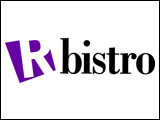The national biosecurity specialist with Vetoquinol Canada says pork producers can dramatically reduce the risk of their herds becoming infected by disease by thoroughly cleaning their barns.
Pork producers and veterinarians are relying more and more on stepped up biosecurity and an increased focus on cleaning and disinfecting equipment to reduce the risk of the transmission of disease.
Dave Van Walleghem, the national biosecurity specialist with Vetoquinol Canada, says every pathogen poses a risk.
The three main things that bacteria need to grow extensively is organic matter, or food, water and temperature and we have all those 3 ideally in a barn situation so we know that those bacteria and viruses are going to grow extensively, viruses especially because that’s where the virus will replicate, through an animal.
All these factors are present in a barn at all times so, for cleaning and disinfecting, the first main thing is remove the animals from the area, take the bulk of the manure or organics out of there. That’s excess feed , manures, dust, all those kind of things out of the area first because they are extensively packed with microbes. Then spray the area with a good penetrating detergent. Most of the organics need an alkaline detergent to take them off properly and that gives a better penetration, a better surrounding of the biofilms and lifting of the biofilms off the surfaces.
Timing is that we want to make sure the soap does its work and so we want to leave it on the surface as long possible, as long as the detergent is still moist. In other words it’s still in its working state and then wash it off at that point. Most of the time we recommend at least 10 minutes and we have seen it up to half an hour to an hour or two of a detergent still staying wet at that point.
Van Walleghem says those are the three simple steps to making sure the ban has been cleaned and disinfected.



